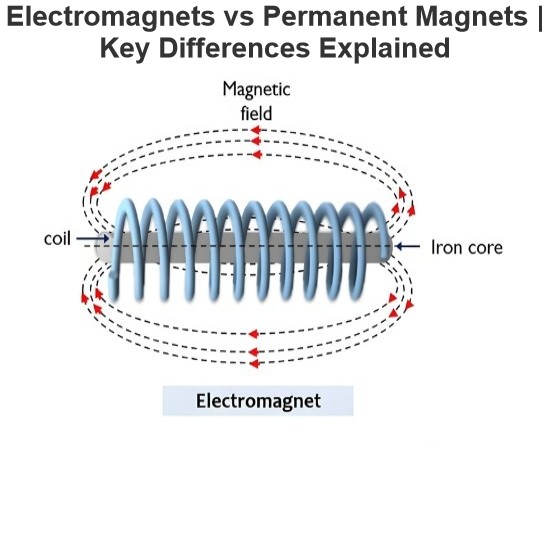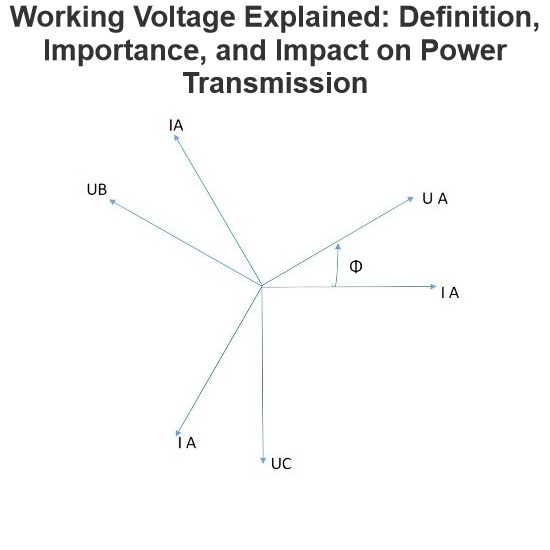Matsayin Electronic Ballast Yana Nufin?
Electronic ballast, ko kuma ake kira electrical ballast, shi ne matsayin yanayi a cikin wurare da ke gudanar da fasahar tsari da karamin faduwar tsohon wakar harsuna.
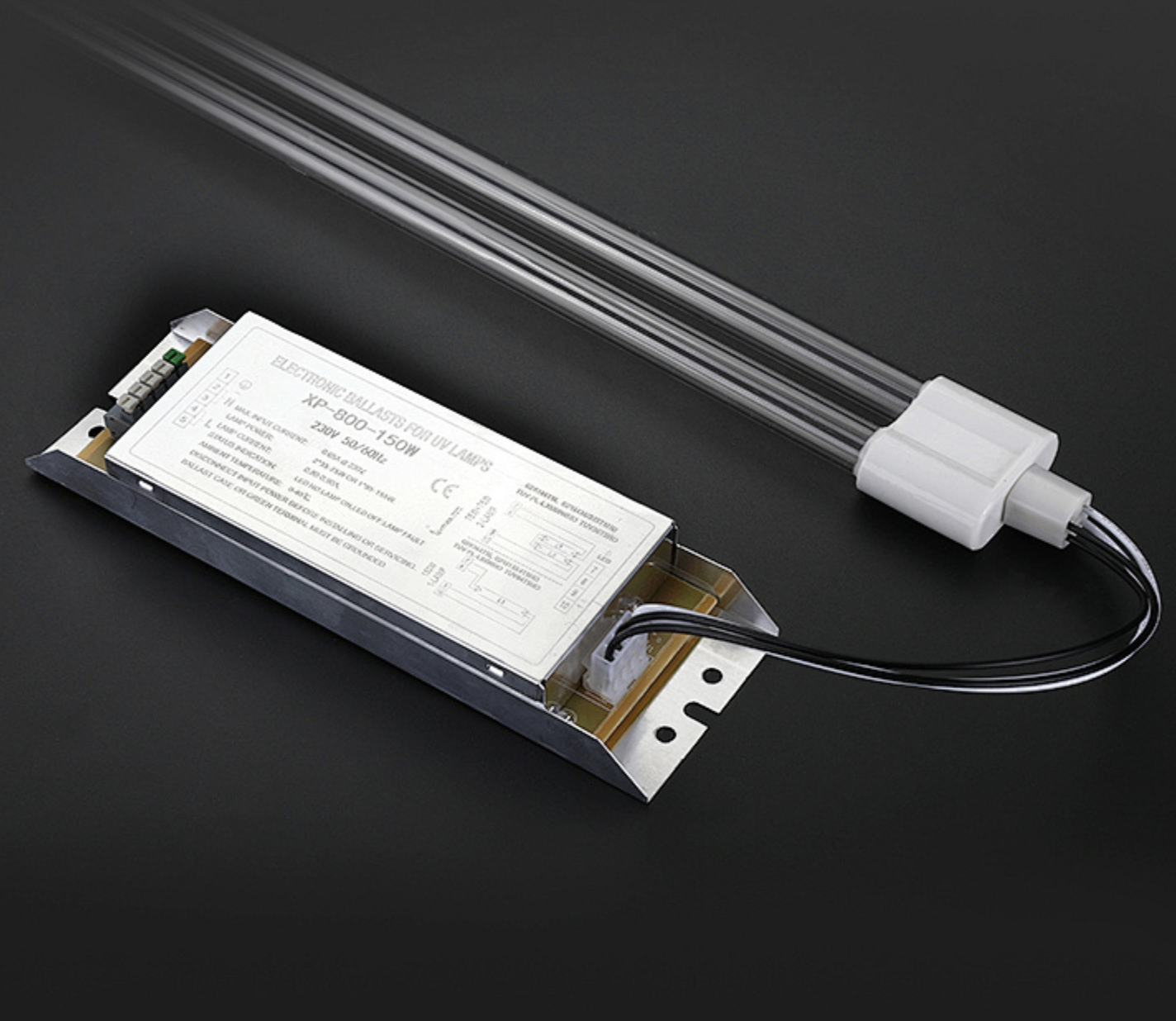
Wannan an samu tare da amfani da yadda gas discharge. Don faɗi yadda gas discharge a fluorescent lamps, electronic ballast ya kawo frequency na power zuwa frequency mai yawa ta ƙarin tare da inganta voltage a kan bulb da karamin lamp.
Block Diagram of Electronic Ballast
An nuna diagramma block na basic na electronic ballast a nan.
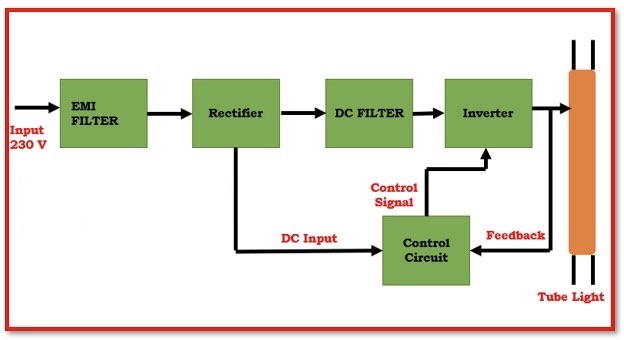
Diagramma block na electronic ballast tana da baka biyar, kamar yadda ake nuna a sashen. Duk electronic ballasts suna iya aiki da wannan diagramma block.
1). EMI Filter
EMI filter tana nuna a Block 1. EMI filters suna da inductors da capacitors wanda suke sauraro ko kuma bagace electromagnetic interference.
2). Rectifier
Rectifier circuit tana nuna a Block 2. Wannan circuit tana kawo alternating current zuwa direct current.
3). DC filter
DC filter circuit tana nuna a Block 3. Capacitor tana da alaka a cikin DC filter circuit don kula impure DC da aka fara a cikin rectifier circuit.
4). Inverter
Inverter circuit tana nuna a Block 4. A wannan block, DC ya zama high-frequency AC, kuma step-up transformer ya zama level na power.
5). Control Circuit
Control circuit tana nuna a Block 5. Wannan circuit tana jin feedback daga output da kuma inganta rectifier, filter, & inverter circuits. Yawan electronic ballasts ba suna da wannan block ba.
Circuit Diagram of Electronic Ballast
IRS2526DS “Mini8” Ballast Control IC tana da muhimmanci a cikin design na 26 W electronic ballast circuit wanda ba a yi amfani da PFC. Tsohon wakar harsuna da kuma half bridge resonant output stage suna da aiki da ita. Frequency na 'HO' da 'LO' pins, wadanda suka fara daga half-bridge gate driver, ana kawo aiki a 'VCO' pin. Don a yi programming da required VCO voltage levels, ana bukata resistor voltage divider a 'VCO' pin. Frequency na internal voltage-controlled oscillator tana daidaita a cikin values na wannan voltage levels. Signal daga internal oscillator tana kara aiki a logic circuitry na high-side da low-side gate drivers. Wannan ya ba aiki don a yi generation da necessary preheat, ignition, da operating frequencies don half-bridge & resonant output stage. Don a bayyana consistent lamp ignition voltage da kuma identify a lamp end-of-life fault setting, an amfani da lamp voltage resistor divider (REOL1, REOL2, REOL3, RIGN1) & feedback circuit (CIGN1, DR1, DR2, DIGN, REOL, CEOL, DEOL+, DEOL-).
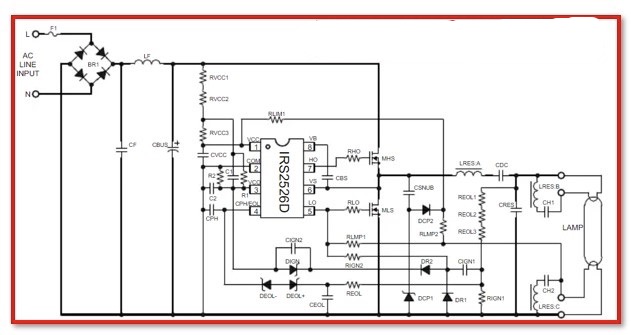
Principle of Operation of Electronic Ballast
Electronic ballasts suna bukatar power a 50 – 60 Hz. Ta tafiya zama alternating current voltage zuwa direct current voltage. Idan haka, DC voltage tana kula da capacitor arrangement. An kara filtered DC voltage zuwa high-frequency oscillation stage, inda oscillation tana da square wave da frequency range na 20 kHz zuwa 80 kHz.
Daga wannan, frequency na output current tana da ƙarin. Don a yi high value, ana bayar in ba a yi small quantity of inductance don a yi elevated rate of change of the current a high frequency.
Zuwa 400 V tana da buƙatun faɗi don gas discharging process a fluorescent tube lights. Inda a yi switch, initial supply of voltage across the bulb tana zama 1000 V saboda high value, kuma gas discharge tana faru daga baya.
Idan discharge process tana faru, voltage across the bulb tana zama 230V zuwa 125V, kuma electronic ballast tana ba aiki a restricted current to flow through the light.
Control unit na electronic ballast tana inganta voltage da karamin. Idan fluorescent lights tana faru, electronic ballast tana aiki a dimmer, limiting current and voltage.
Performance of Electronic Ballast
Yawan metrics suna amfani a matsayin maimaita effectiveness na electronic ballasts.
Ballast Factor tana da muhimmanci. Tana da ratio na light output na lamp idan a yi drive by the ballast under examination zuwa light output na lamp idan a yi drive by the reference ballast.
Don electronic ballasts, wannan value tana da ƙarin bayan 0.73 zuwa 1.50.
Single ballast tana iya bayar in ba a yi large variety of light output levels, wanda tana da muhimmanci a cikin ƙarin range.
Wannan tana da yawan uses a dimming circuits. Amma, an samu cewa both excessively high and excessively low ballast factors tana bagace lamp life saboda lumen degradation brought on by high & low lamp currents, respectively.
Ballast Efficacy Factor, wanda tana da ratio na ballast factor (in %) zuwa power & tana bayar in ba a yi relative measurement of the system efficiency of the entire lamp ballast combination, tana amfani da ita a lokacin da a yi comparison na electronic ballasts daga model da manufacturer masu sama.
Ballast operation efficacy tana kula a Power Factor (PF) metric. Ability na electronic ballast don a yi conversion na supply voltage & current zuwa useable power da kuma deliver it to the light tana kula a its power factor, inda 1 tana da optimal value. Amma, low power factor ballasts tana bukatar nearly twice as much current as higher power factor ballasts & hence support fewer lights in a circuit. Wannan ba tana nuna capacity na ballast don a yi bayar light ba.
Duk wurare electrical tana da limit don linear it can be, & idan input signal tana fiye da wannan limit, signal tana zama distorted, resulting in non-linear & harmonic distortions. Harmonic distortion, wanda tana kula a Total Harmonic Distortion, tana ce an samu cewa tana faru idan signal waveform tana zama da typical sinusoidal shape.
Harmonic current added by electronic ballasts zuwa power distribution system as a percentage tana da sunan THD. Idan ANSI standards tana ba maximum distortion of up to 32%, majority of manufacturers tana ci gaba don maintain THD below 20%. It is simpler to maintain distortions at these levels using electronic ballasts than it is with magnetic (or) hybrid ballasts.
Advantages of Electronic Ballast
Dependability na ballast tana zama ƙarin a lokacin da a yi amfani da ita; inda a yi amfani da ita ƙarin, tana da ƙarin failure probability. Compared to magnetic ballasts, power na lights tana zama ƙarin gradually when utilised with electronic ballasts.
Wannan devices suna da kyau a tsari, suna da karfi, da kuma suna da rarrabe.
Power loss a cikin electronic ballasts tana da ƙarin da half compared to magnetic (or) hybrid ballasts.
Additionally, owing of the high bulb voltage needs, they may easily run lights that cannot be driven directly by a choke on the line.
In lamp-ballast systems, energy efficiency may be improved primarily in three ways: by reducing ballast losses, operating at higher frequencies, & reducing lamp electrode losses. Electronic ballasts are more energy efficient since they include all three of these features at once.
Disadvantages of Electronic Ballast
Electronic ballasts generate strong harmonic current from alternating current spikes around voltage maximums. This may create stray magnetic fields, pipe corrosion, radio and TV interference, and IT equipment failure, in addition to lighting system issues.
High harmonic content may overload three-phase transformers and neutral wires. The human eye may not detect a greater flicker rate, but infrared remote controls for home entertainment equipment like TVs .
Intelligent ballast documentation and design reduces interference in application frequency ranges.
However, there are certain undiscovered nooks in frequency spectrum that are not employed in any application, and most ballast disturbances in this area are ignored, generating a cleaner image on paper than its certainty.
Electronic ballasts cannot handle power spikes and overloads.
Electronic ballasts also have a high initial cost, which may deter impulsive buyers, but they cost more than for it over time.
Application of Electronic Ballast
1). Keep the output power constant
Maintain the steady output power of the lights. The technique of square-wave current driving ensures that no “acoustic resonance” phenomena occur.
2) Abnormal protection
When the electronic ballast operated with the lamp, it is typical for tubes to leak, not activate, not start, the primary circuit current to be too high, and other abnormalities to occur. When an exception arises in the illumination, the electronic ballast will cut off automatically to ensure the ballast’s and the light’s safety.
3). Controls the over-current and over-voltage
When the quality of the power supply is poor, the grid will experience various serious phenomena such as harmonics & noise pollution (such as transient high voltage, high energy pulse), or the switch will be unable to be used due to lightning, the ballast can protect the lamp better through voltage and current regulation.
4). Reduce the temperature rise














